This post is Part III in my blog post series on our road trip through the Peloponnese, a peninsula in southern Greece. This part of the road trip covers our departure from Nafplio, visits to two ancient sites, including you may have heard of *cough* Sparta *cough*, a visit to a Byzantine site and our arrival to the Mani region. Make sure you read Part I here and Part II here first.
After our second excellent day in the Peloponnese, we woke up to a cloudy day in Nafplio. We walked across the town to have pastries at ArKo, a proper bakery that uses French techniques to make delicious treats.
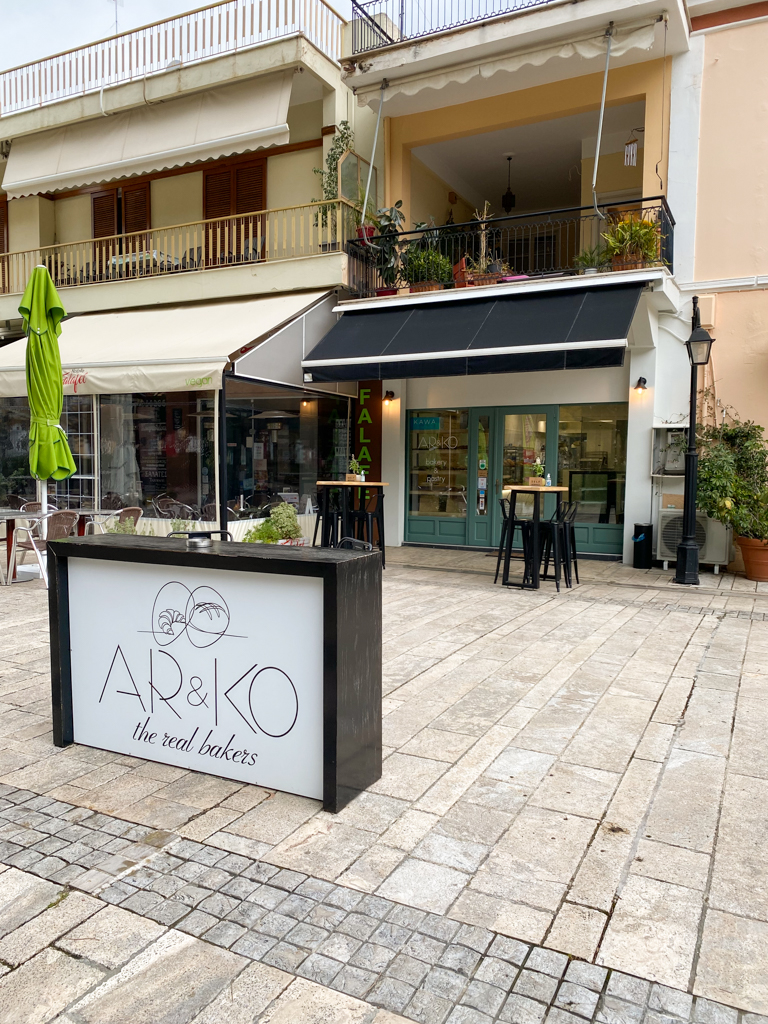

After breakfast, our initial plan was to drive straight to the site of Mystras. However, Mystras is located high up in the mountains and because the weather looked a bit ominous, we decided to slow down our itinerary. And by slow down, I mean delay it and squeeze in another ancient site: Tiryns!
Tiryns, Famed For Its Walls
They say, this is the work of Kyklopes, who built the wall of TIRYNS for Proitos.
– Pausanias, 167
This is another Mycenean archaeological site, located just 5 minutes away from Nafplio. Tiryns dates as far back as Neolithic times (around 5000 BCE). The Mycenaeans moved into Tiryns after 2000 B.C. and built the Acropolis of Tiryns in three stages during the 14th and 13th centuries BCE. About 750 metres of walls surround the entire citadel.

 Tiryns is first referenced by Homer, who praised its massive walls. Indeed, Tiryns is a great example of “cyclopean masonry”, walls constructed without mortar, using enormous blocks of stone. Ancient legend attributed such walls to a Thracian race of giants, the Cyclopes, named after their one-eyed king, Cyclops, because only giants of superhuman strength could have lifted the enormous stones.
Tiryns is first referenced by Homer, who praised its massive walls. Indeed, Tiryns is a great example of “cyclopean masonry”, walls constructed without mortar, using enormous blocks of stone. Ancient legend attributed such walls to a Thracian race of giants, the Cyclopes, named after their one-eyed king, Cyclops, because only giants of superhuman strength could have lifted the enormous stones.

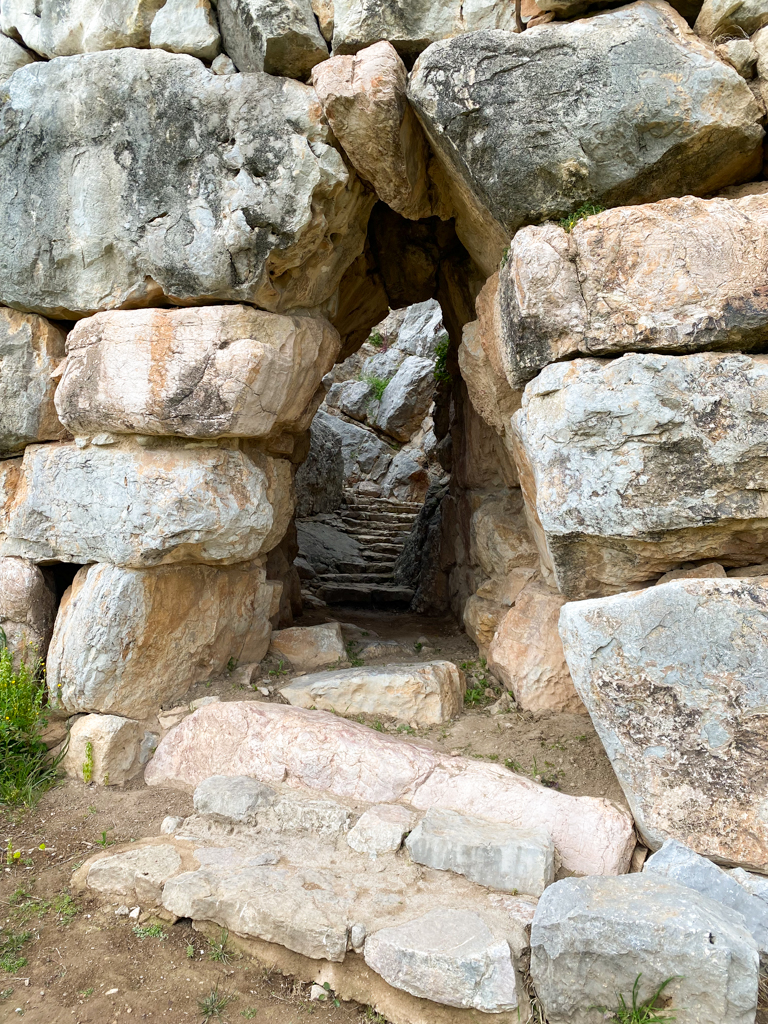
Another important legend tied to Tiryns is Heracles. It is where the hero is thought to have resided while he performed his twelve labours. Some sources even believe this was his birthplace. Heracles was the son of Zeus, the king of the gods, and a mortal woman Alcmene. Zeus’s infidelity would enrage Hera which would ultimately cause Heracles a lot of pain. Heracles went on to marry the King Creon of Thebes’ eldest daughter, Megara. However, Heracles killed Megara and their children in a fit of madness induced by Hera. After recovering his sanity, Heracles deeply regretted his actions; he was purified by King Thespius and then travelled to Delphi to inquire how he could atone for his actions. Pythia, the Oracle of Delphi, advised him to go to Tiryns and serve his cousin, King Eurystheus of Mycenae, for ten years, performing whatever labours Eurystheus might set him; in return, he would be rewarded with immortality.
Eurystheus originally ordered Heracles to perform ten labours. Heracles accomplished these tasks, but Eurystheus refused to recognise two, so he set two more tasks. These were the labours, of which at least six were accomplished in the Peloponnese:
- Slay the Nemean lion.
- Slay the nine-headed Lernaean Hydra.
- Capture the Ceryneian Hind.
- Capture the Erymanthian Boar.
- Clean the Augean stables in a single day.
- Slay the Stymphalian birds.
- Capture the Cretan Bull.
- Steal the Mares of Diomedes.
- Obtain the girdle of Hippolyta, queen of the Amazon.
- Obtain the cattle of the three-bodied giant Geryon.
- Steal three of the golden apples of the Hesperides.
- Capture and bring back Cerberus.

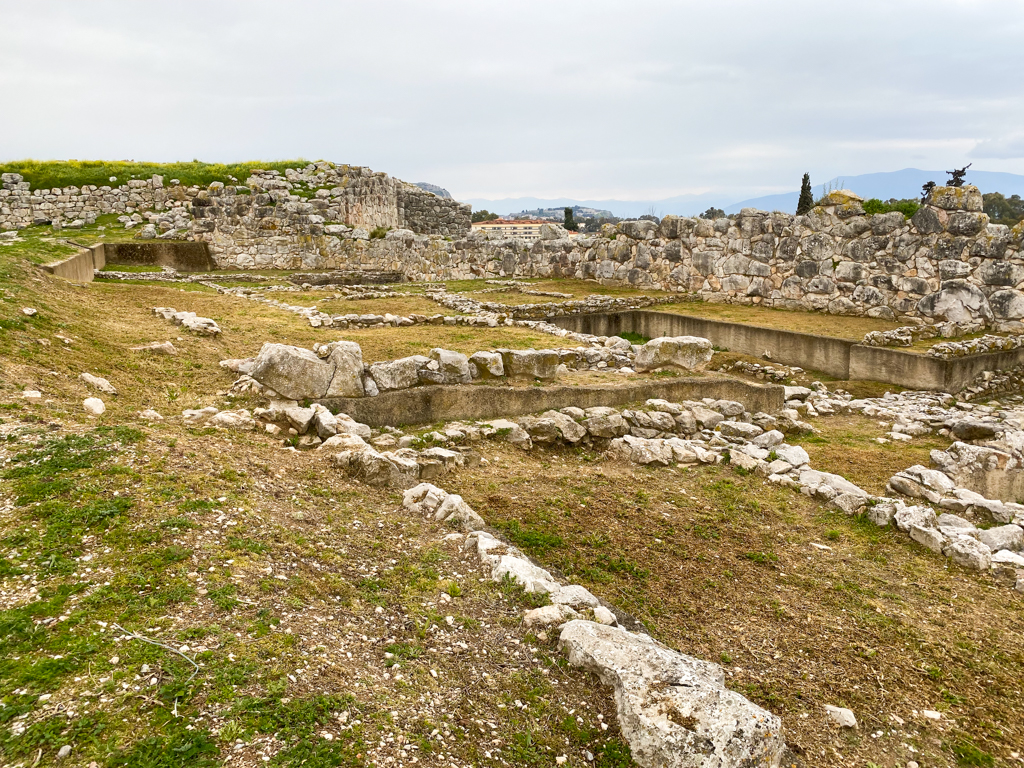 Today, the site is well-preserved and you can see some of those awesome walls. You can see the layout and structure of the citadel, which is why, along with Mycenae, Tiryns became a UNESCO World Heritage Site in 1999.
Today, the site is well-preserved and you can see some of those awesome walls. You can see the layout and structure of the citadel, which is why, along with Mycenae, Tiryns became a UNESCO World Heritage Site in 1999.
Mystras
The site of Mystras is quite different from the other sites we’ve visited thus far. The town developed down the hillside from a fortress built in 1249 by the Frankish leader and prince of Achaia, William II of Villehardouin. The Franks surrendered the castle to the Byzantines in 1262 and then it became the centre of Byzantine power in southern Greece. During the last few decades of the Byzantine period, Mystras was the second most important town after Constantinople. And then finally, after the fall of Constantinople in 1453, Mystras became the centre of the Byzantine Empire until it fell to the Turks just seven years later.

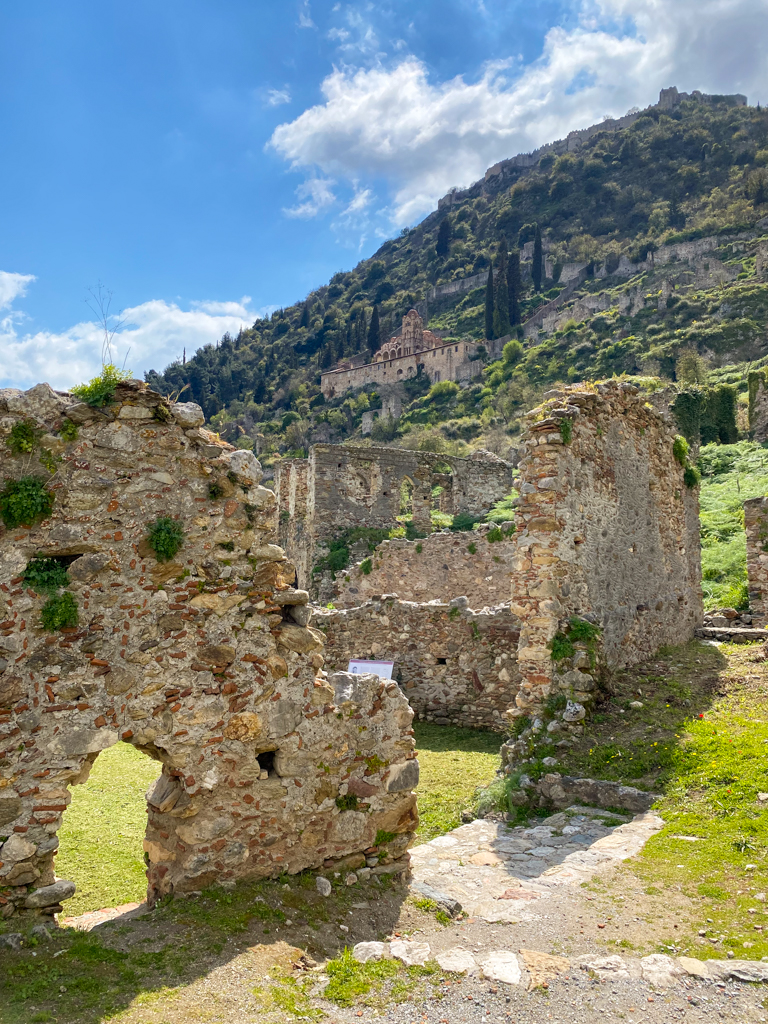
During the Byzantine times, Gemistos Plethon (1355–1452) founded a school of humanistic philosophy here and his enlightened ideas, including the revival of the teachings of Plato and Pythagoras, attracted intellectuals from all corners of Byzantium. Art and architecture also flourished, as seen in the town’s splendid buildings and frescoes.

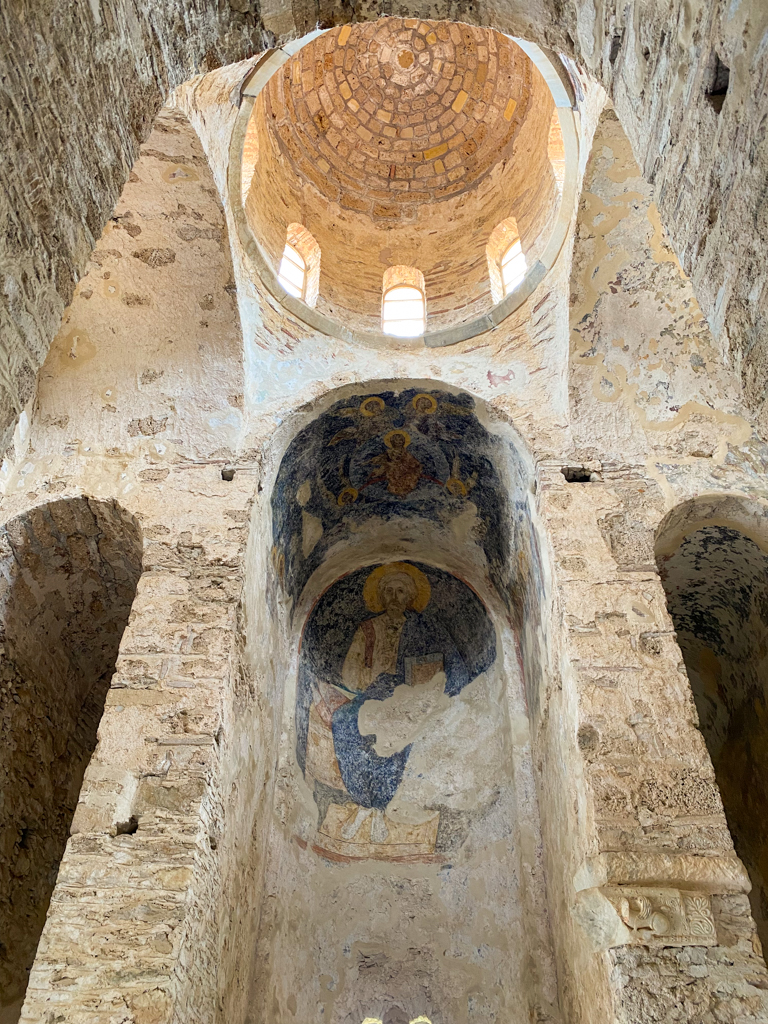
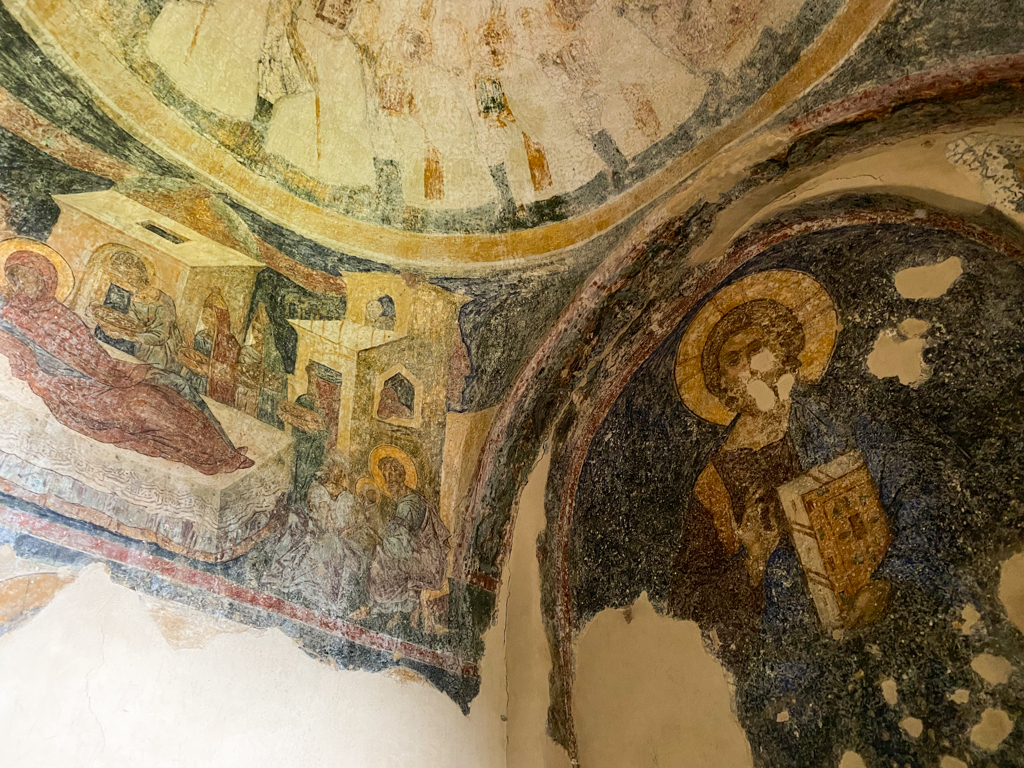
Many monasteries were founded here, including those of the Brontochion and the monastery of Christos Zoodotes (Christ the Giver of Life).


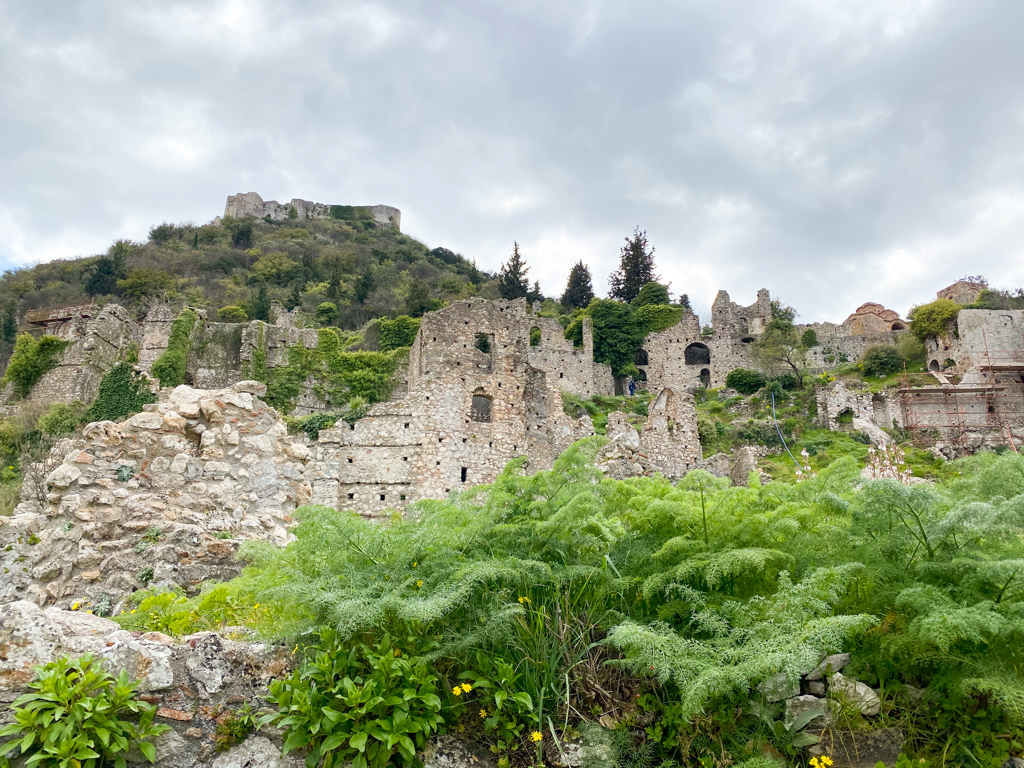
As I mentioned, Mystras was captured by the Turks in 1460, and they occupied it until the Venetians arrived. After 1834 the inhabitants of Mystras gradually started to move to the modern town of Sparta leaving only the medieval ruins, standing in a beautiful landscape. It is a magnificent area to explore, and the setting along the side of a mountain is particularly impressive. A word of warning though: the drive up there is pretty harrowing!
Because of its proximity to Sparta, many Western travellers mistook Mystras for ancient Sparta. I can assure you Mystras looks and feels nothing like Sparta, but it was our next stop!
Sparta, The Land of Fair Women
Around 650 BC, Sparta rose to become the dominant military land power in ancient Greece. I mentioned the Trojan War in my previous post when describing Agamemnon and his role in the war. Indeed, I must mention the war again as we’re talking about Sparta! And yes, Sparta was known as the land of fair women, evidenced by the fact that Helen was considered the most beautiful woman in the world.
Going back to the beginning, the story starts with three rival goddesses: Hera, queen of the gods; Athena, goddess of wisdom; and Aphrodite, goddess of love. They decided to have a competition to determine which of them was the most beautiful. To judge this they chose a mortal, Paris, a young prince of Troy in Asia Minor (modern Turkey). They were typical goddesses, however, and none of them had any intention of playing fair. Hera offered Paris great power if he would choose her, while Athena offered him great wisdom. Only Aphrodite knew the best way to a young man’s heart; she promised him the love of the most beautiful woman in the world. Unsurprisingly, Aphrodite won. And so, he was given Helen, the wife of Menelaus, King of Sparta.
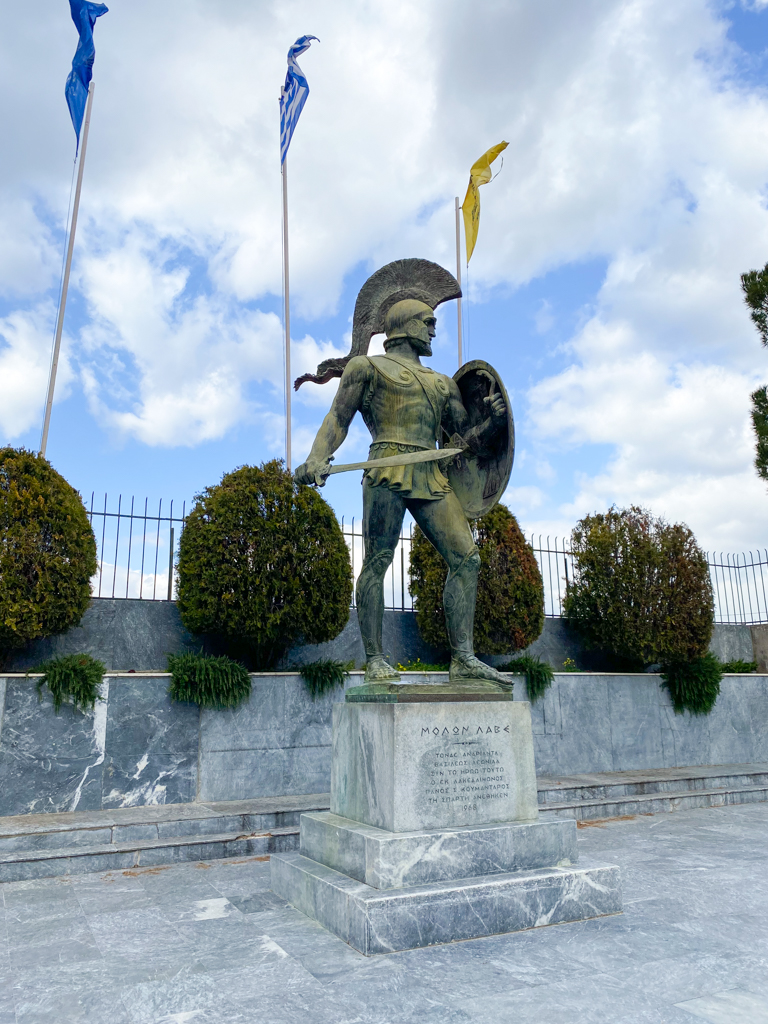

While this event changed the mythological world of heroes, legends, gods and goddesses forever, what of the historical place of Sparta? Sparta is almost completely surrounded by major mountain ranges. In contrast to other ancient Greek cities, Sparta was not a compact fortified city-state centre with monumental civic and religious buildings. It was rather a loose collection of smaller villages. This makes a lot of sense because the values and priorities of Sparta were focused on military greatness.
By the 7th century B.C. Sparta had conquered all of Laconia and Messenia and by the 6th century, all of the central and southwest Peloponnese was under direct Spartan control. In the 5th century B.C. Sparta had control of the Peloponnesian League and in 405 B.C. defeated Athens. And then, their power started to dwindle and this is perhaps why so few ruins remain from Classical times.
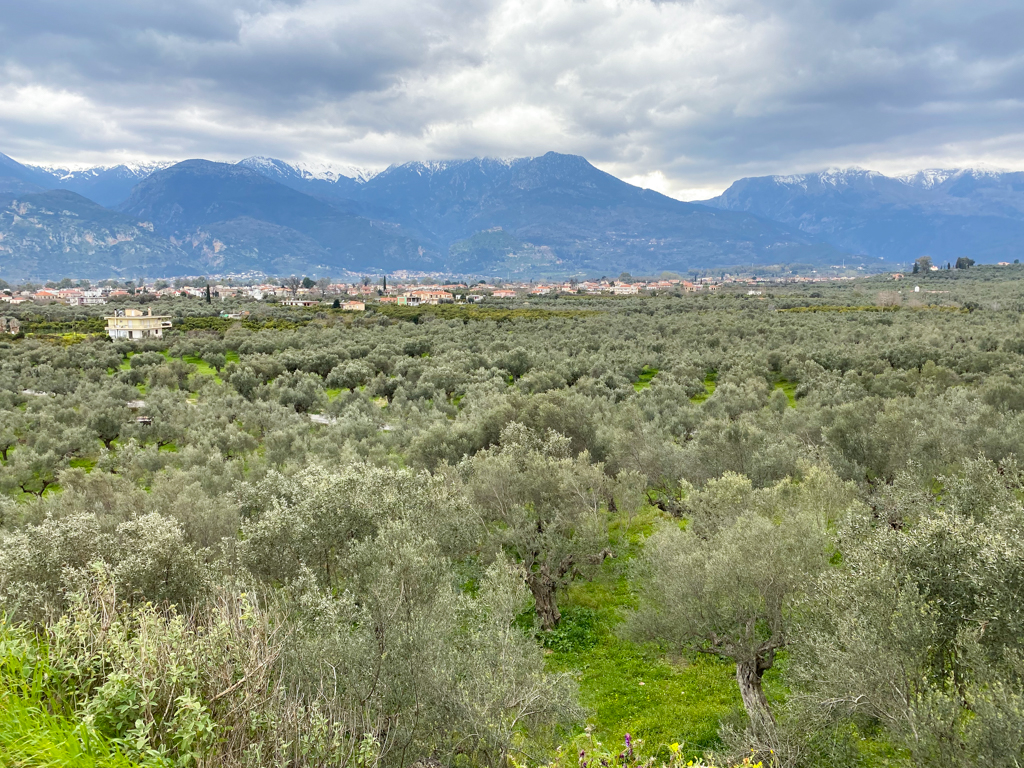
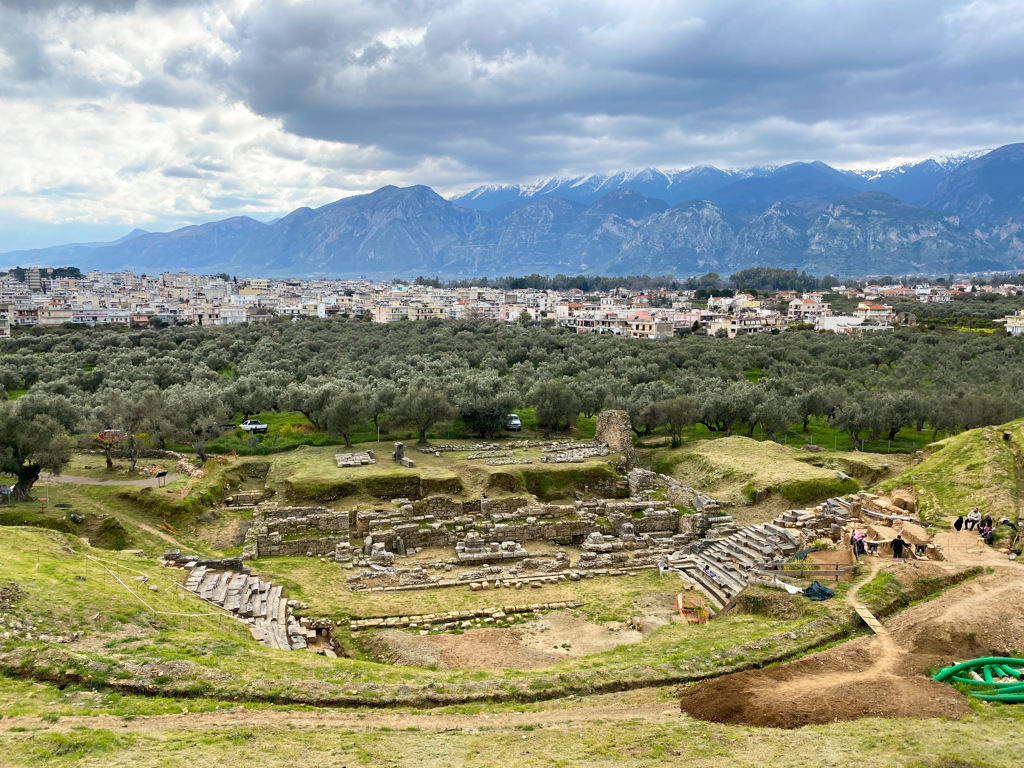 Nonetheless, it’s really interesting to see the site, especially where it is set. The mountain ranges are beautiful. I was happy to see a group of archaeologists, restoring the large amphitheatre at the site. There should be more to come from Ancient Sparta!
Nonetheless, it’s really interesting to see the site, especially where it is set. The mountain ranges are beautiful. I was happy to see a group of archaeologists, restoring the large amphitheatre at the site. There should be more to come from Ancient Sparta!
Gytheio
From Sparta, we drove an hour south to the coastal town of Gytheio, the gateway to the Mani region. It’s a beautiful fishing town, with lots of charming taverns and lovely beaches. We didn’t stay here long, but it was lovely to walk along the pathway that runs along the sea.
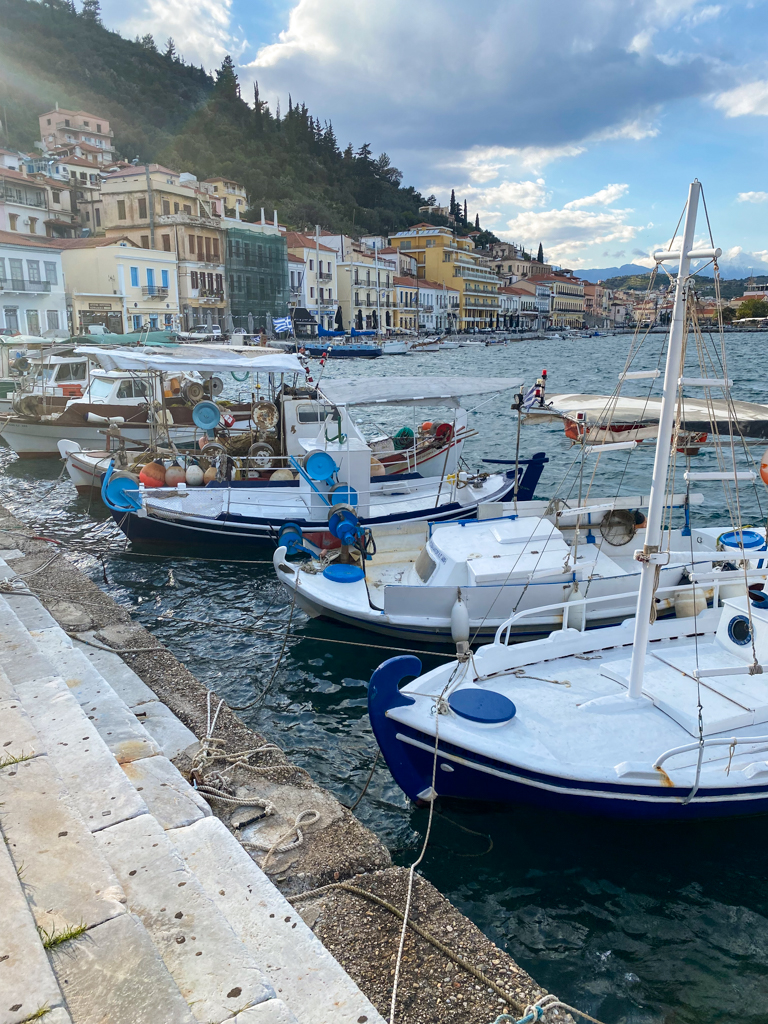
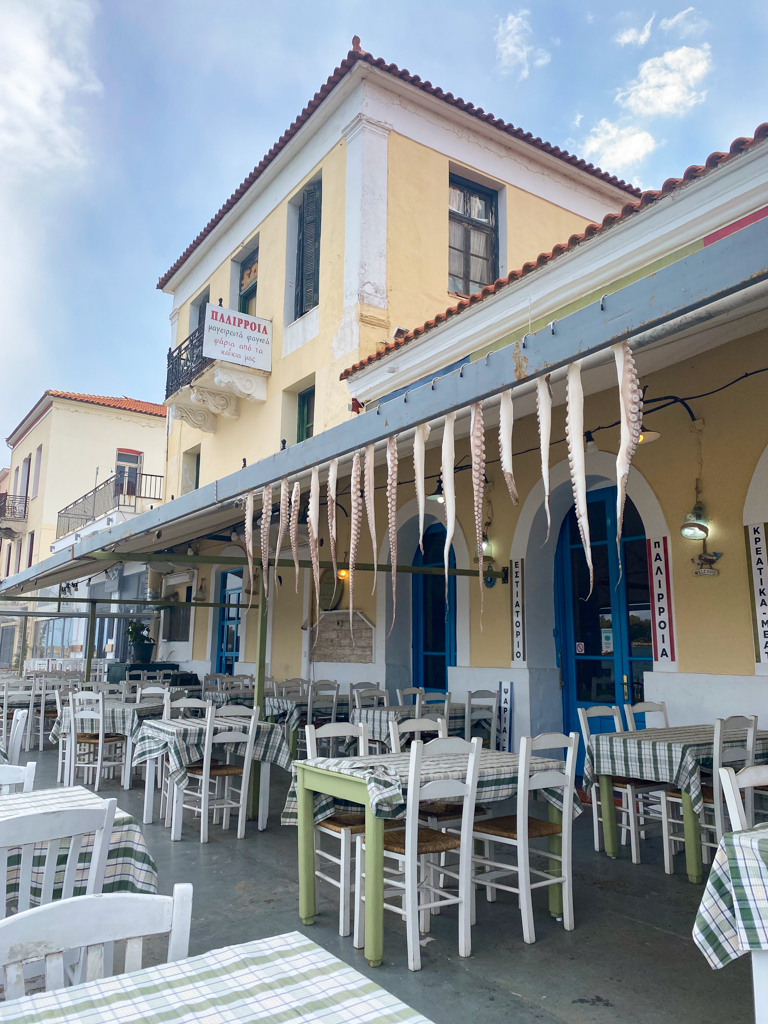
But we’re not done with Greek mythology just yet! Legend has it that the tiny island in Gytheio waters is where Paris of Troy and Helen from Sparta spend their first night together before departing for Troy, thus igniting the Trojan War.

 I wish we could’ve stayed longer, but we needed to get to our accommodation to rest, eat and sleep for another epic day. From Gytheio, we drove further to Limeni, our base for the next couple of nights as we prepared for our exploration of the Mani region.
I wish we could’ve stayed longer, but we needed to get to our accommodation to rest, eat and sleep for another epic day. From Gytheio, we drove further to Limeni, our base for the next couple of nights as we prepared for our exploration of the Mani region.
Look out for my next post on the Mani, a magical, remote region in the Peloponnese.



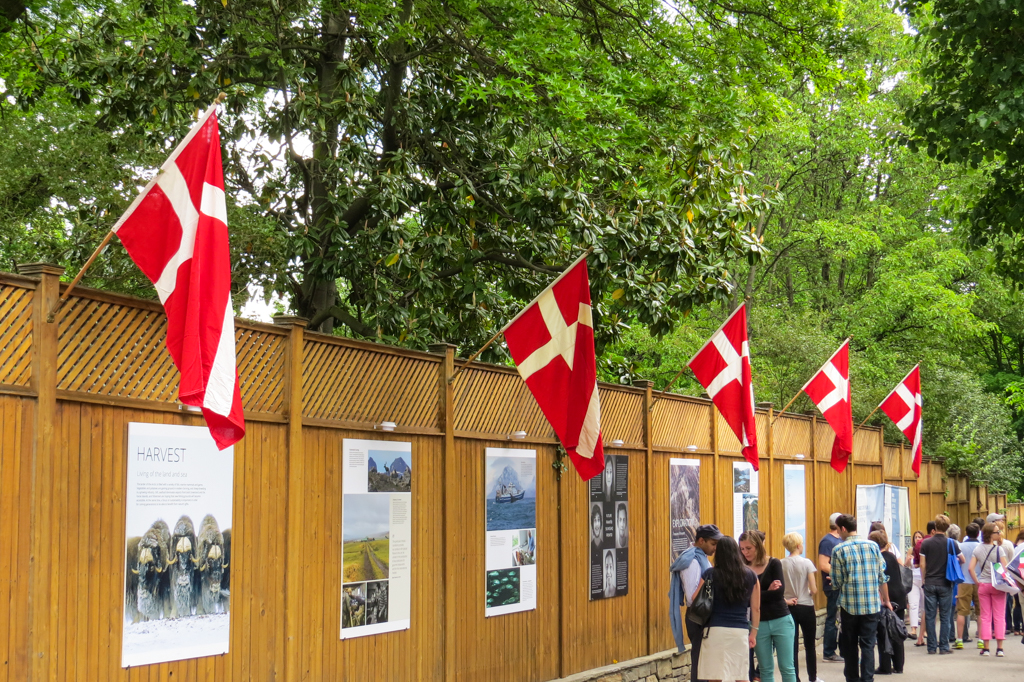
No Comments